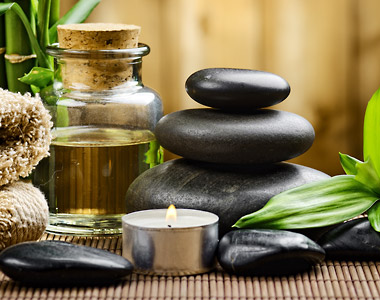
Are you curious about leveling up your skincare game? Maybe you’ve heard about microneedling but aren’t quite sure what it’s all about. Or perhaps you’re new to the whole concept and wondering if it’s something worth diving into. Either way, you’re in the right place!
Today, we’re breaking down the A to Z of microneedling—and its lesser-known cousin, nanoneedling. We’ll talk about what they are, who they’re perfect for, and how you can prep for one of these game-changing treatments.
The goal is to help you make an informed decision and ensure you get the most out of your microneedling or nanoneedling experience – and how to find the right professional to do it.
What are Microneedling and Nanoneedling?
You might be asking yourself, “What exactly are microneedling and nanoneedling, and how do they differ?” While they may seem similar, they serve different purposes and offer unique benefits.
The one area in which they are the same is that microneedling and nanoneedling are both skin treatments that use tiny needles to penetrate the epidermis and dermis, which results in a skin response that produces healthier skin cells. These tiny needles are inserted into a tool that looks a lot like a fat pen that vibrates the needles up and down.
A serum is applied to the skin during the treatment, and the needles help to push the serum deeper into the skin. The serum contains active ingredients that significantly boost the health of the skin.
What is Nanoneedling?
Let’s start with nanoneedling. This treatment uses very short needles and, therefore, only punctures the epidermis, which is the top layer of the skin.
Since nanoneedling focuses on the surface of your skin, it is excellent for exfoliation and brightening of the skin. The other bonus of nanoneedling is that it also enhances the effectiveness of serums, as it helps the serums to better penetrate the skin.
In essence, nanoneedling is ideal for those looking for a less intense yet effective skincare treatment. There is no downtime with nanoneedling, and because it is only affecting the epidermis, the treatment is quicker as there is no need for numbing cream.
What is Microneedling?
On the other hand, microneedling goes deeper into your skin, reaching the dermis, which is the middle and thickest layer of the skin. As a result, it is fantastic for treating skin issues such as acne scars, congested skin, and wrinkles.
Microneedling is a more comprehensive treatment designed for those looking for substantial changes in their skin’s texture and appearance. When you need more than just a superficial treatment, microneedling may be the right choice. Several microneedling treatments are great for helping to break up pigmentation, such as sunspots, fill in shallow scarring, and produce overall healthier skin.
Since microneedling reaches the dermis, it stimulates the skin to produce collagen (something that benefits everyone as collagen production of the skin slows down as we age) and to tighten elastin which is essential for tightening sagging skin.
Microneedling does require some downtime (2-3 days), where you will want to stay home as your skin heals from the treatment. The treatment is a bit longer than a nanoneedling treatment, as a numbing cream is applied before the procedure to ensure full client comfort.
So there you have it: two distinct treatments, each with its own set of benefits. Whether you’re interested in a lighter treatment like nanoneedling or a deeper skin treatment like microneedling, knowing the differences is essential to make an informed decision.
Who Should Consider Microneedling?
If you’re reading this, you’re probably intrigued and wondering, “Is microneedling right for me?” Well, microneedling offers a range of benefits that cater to various skin types and concerns.
Consider it if: You Have Acne-Prone Skin
First things first, if you have acne-prone skin, listen up. Microneedling could be a good match for you—unless you currently have active acne. The treatment can help clear congested skin that often feels bumpy or uneven. Congested skin often leads to acne, so microneedling is an excellent treatment for those with this condition.
However, if you are experiencing active acne, then you will want to stay away from microneedling until the acne infection has cleared up. Other great spa treatments can help you clear up the acne. Your aesthetician will be able to help you determine if microneedling will be beneficial for you if you have this skin condition.
Consider it if: You Are Looking For Anti-Aging Benefits
If you’ve started to notice signs of aging, like wrinkles or loss of elasticity, microneedling can definitely offer a helping hand. As stated above, the treatment works to strengthen elastin, boost the production of tighter elastin, and boost collagen production, helping your skin regain its youthful vigor.
As we age, our collagen production slows down, so microneedling can help boost collagen production even before you see the signs of aging. We would be remiss if we also didn’t take a moment to mention that your best aging prevention of the skin is to always use sunscreen.
Yes, you read that correctly; make sure you always use sunscreen. The damaging UVA rays penetrate clouds and windows, so sunscreen is the best skin aging defense!
Consider it if: You’re Trying To Minimize Pores
Who doesn’t want to minimize those pesky pores? Since microneedling shocks the skin to go into ‘healing’ mode it does a fantastic job at helping to tighten your pores, making them less noticeable. So if you’re bothered by enlarged pores, this treatment is worth considering. Keep in mind that your skin needs pores to stay healthy and function properly, so nothing can get rid of your pores, but over time, pores can stretch and become enlarged. Microneedling can help to tighten them back up.
Patience is a virtue – It’s important to remember that the effects of microneedling aren’t immediate. It takes time for your skin to heal and regenerate vital proteins like elastin and collagen. You’ll probably also want a series of treatments spaced 4-8 weeks apart for optimal results. So patience, as they say, is a virtue.
Preparing for Your Microneedling Treatment
Before you jump in and book that appointment, there are a few things to keep in mind to ensure you’re fully prepared for your microneedling treatment.
Step 1: Hydrate Your Skin
First off, make sure your skin is well-hydrated before the treatment. You might even consider a pre-treatment like a chemical peel with an algo mask to prep your skin.
Pair that with a quality hydrating serum or cream at home, and you’re setting the stage for a successful microneedling session. For more tips on quality home care, check out our other blogs.
Step 2: Learn About Your Options
Everyone’s skin is different – and so too are the options available for your microneedling treatment.
Do some research and familiarize yourself with the different types of treatments, depths of needles, and more. This way you’ll be able to make an informed decision that works best for you.
Book a consultation with an aesthetician to make sure all of your questions get answered before booking a treatment. A good aesthetician will be able to help you wade through the piles of information and various skin treatments and help you determine if microneedling will work well for you and your skincare goals.
Step 3: Choose Your Aesthetician Wisely
Who performs your treatment matters! Make sure to ask your aesthetician about the type of needles they use and how they clean their tools. If your aesthetician is not using a sterilized packaged disposable needle-head, then turn around quickly and leave. Do not book a microneedling treatment at a place that does not use unopened, never used, sterilized needles.
Microneedles and nanoneedles are designed to be used only once! If your aesthetician assures you that they sterilize the needles, that is not sufficient, as used needles will have microdamage. You should also inquire about the ingredients in the serum they plan to use during the treatment.
Hyaluronic acid is the best serum to use during microneedling, while retinol should be avoided, as it can potentially damage the skin if it penetrates too deeply. Always let your aesthetician know about any skin conditions or allergies you have, as this can affect your treatment.
Your aesthetician should take a full medical history of you and do a consultation to make sure that microneedling will benefit you and your skin and that you do not have any contraindications.
Step 4: Remember: Home Care is Crucial
Post-treatment, make sure to follow the home care guidelines given by your aesthetician. During your consultation, feel free to ask your aesthetician what you need to do for home care. If your aesthetician says there is no home care needed, then once again, we recommend that you turn around quickly and leave. A professional aesthetician will have instructions for you to follow at home to ensure that you get the best results from your microneedling treatment.
Proper aftercare not only boosts the healing process but also amplifies the benefits of your microneedling treatment. Don’t risk wasting your time and money by not following the necessary steps. Be sure to use a serum containing hyaluronic acid per your aesthetician’s instructions to get the best possible result.
You wouldn’t get your teeth cleaned at the dentist and then go home without brushing or flossing. In the same way, proper home care for your skin after your microneedling session is to be expected.
3 Things You Probably Didn’t Know About Microneedling
Microneedling might seem straightforward, but there’s more to it than meets the eye. Here are some insider tips and facts that could help you get the most out of your treatment.
1) The Number of Needles Matters
When it comes to microneedling, fewer needles don’t necessarily mean a less aggressive treatment. In fact, the number of needles your aesthetician uses is based on factors like the depth they plan to reach and the area of your face being treated.
So, don’t hesitate to ask your aesthetician why they’re using a certain needle count and depth—it’s a conversation worth having.
2) Depth Also Matters!
Speaking of depth, it can significantly affect the outcome of your treatment. While deeper penetration can sometimes offer more aggressive—and effective—results, that’s not always the case.
Different areas of your face have varying skin thickness, so the depth can change based on your skincare goals. Your aesthetician should be able to guide you on this.
3) Microrollers: Not Recommended
You might be tempted to buy a microroller for at-home treatment, but we strongly advise against it.
The angle of penetration with these devices changes constantly as they are on a roller and hit the skin at an angle, which leads to skin scratching rather than effective treatment. (Plus, they’re hard to clean properly, raising the risk of skin damage and infection.)
Schedule Your Consultation with Spa Escape
And there we have it—your comprehensive guide to microneedling! Whether you’re considering this treatment for the first time or just looking to deepen your understanding, we hope this guide helps you out.
If you’re ready to book your microneedling appointment, our expert team at Spa Escape is here for you. We’ll work with you to discuss your skin goals and create a personalized treatment plan that caters to your individual needs.
Ready to start looking and feeling better? Book a free microneedling consultation with us today!

